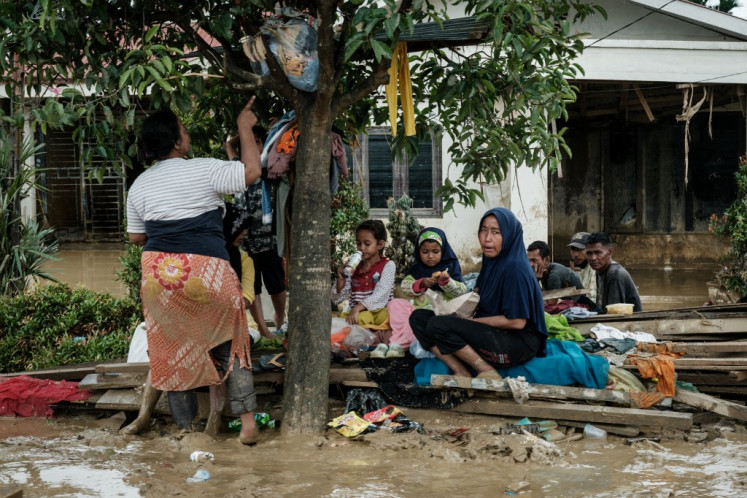Popular Reads
Top Results
Can't find what you're looking for?
View all search resultsPopular Reads
Top Results
Can't find what you're looking for?
View all search resultsVast rice fields at risk of crop failure due to floods
Around 10,000 hectares of rice fields on the northern coast of Cirebon regency, one of West Java’s rice production centers, are at risk of failure due to floods as the rainy, planting season, locally known as rendeng, is unusually wet
Change text size
Gift Premium Articles
to Anyone
A
round 10,000 hectares of rice fields on the northern coast of Cirebon regency, one of West Java’s rice production centers, are at risk of failure due to floods as the rainy, planting season, locally known as rendeng, is unusually wet.
The rice fields that are prone to floods are found in Arjawinangun, Susukan, Gegesik, Kapetakan, Panguragan, Surannggala, Gunung Jati, Ciwaringin, Mundu, Gebang and Pabedilan districts.
“Six of the 11 districts — Kapetakan, Suranenggala, Gunung Jati, Arjawinangun, Mundu and Susukan — are predicted to be hit by massive floods and crop failure will be more severe,” Cirebon Regency Livestock, Plantation and Agriculture Office head Ali Effendi said on Thursday.
He added that besides their lower elevation compared to other districts in Cirebon regency, the irrigation channels in the flood-prone districts are also badly damaged and had affected water distribution.
“Water from upstream will overflow and swamp the rice fields. Besides that, the districts lack catchment areas due to the severely damaged environment. Rivers have also silted up and unable to retain water well,” he said.
Ali said despite the looming threat of floods, he was optimistic that rice production in Cirebon regency would not be affected. For the 2012-2013 period, his office has targeted a production of 540,000 tons of dry, unhusked rice, or equivalent to 350 tons of rice, derived from the 50,000 ha of rice fields in the regency.
“Despite the risk of floods during the rainy season, overall we are upbeat that the production of dry unhusked rice will be safe, so Cirebon regency can maintain its status as a rice production center in West Java. We will make efforts so the floods will not severely affect rice production,” he said.
To anticipate loss due to the potential floods, Ali has urged farmers to accelerate planting rice until at least the middle of December, so that in January or February, the rice crops will already be able to withstand the flooding.
“We asked farmers well beforehand to plant rice earlier during the rendeng this year. Apparently, some of the farmers have yet to start sewing as they are still waiting for the month of January or February. We are afraid that if they wait too long, rainfall will be high and the seedlings will not be strong enough when they are submerged by floods. They will quickly rot because their stems are still young,” said Ali.
Besides planting rice in advance, added Ali, Cirebon regency administration had taken several anticipatory measures, such as providing superior seedlings, pumps and pesticides.
“For those who have already planted rice, the government has provided pumps to take water from their fields. We will also provide superior seedlings and fertilizer for farmers facing crop failure due to the floods,” said Ali.
A farmer in Mundu district, Tasman, said the advice to farmers from the government to grow rice in advance was of great help to them.
“Usually, farmers plant rice during the rendeng, but thanks to the counseling and information from the government, we now understand that if we wait to plant rice early next year, the crops will most likely be damaged by the floods,” he said.
The measure, added Tasman, could anticipate the loss incurred by farmers. “Farmers could suffer huge losses due to crop failure,” said Tasman, who cultivates a 2-ha rice field.










